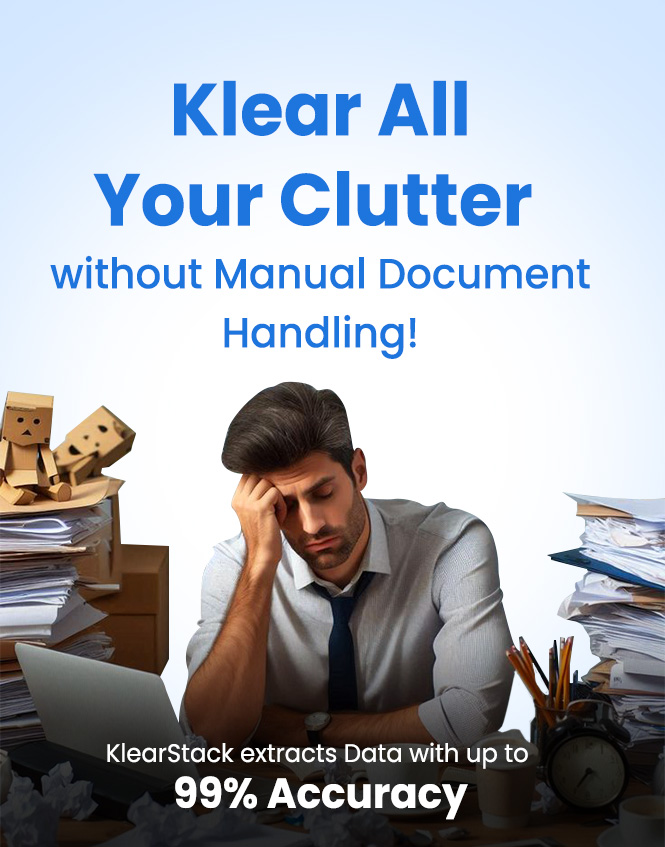[vc_row pix_particles_check=””][vc_column][vc_column_text]Any delay in data loading directly impacts a company’s timelines. Especially the sales reports that serve as the basis of inventory planning, marketing, and sales target decisions. The manual invoice processing system also relies on manual monitoring. This makes it prone to errors. Hence, invoice automation ocr software is required. Optical character recognition (OCR) technology can automatically capture data from your invoice. This helps to reduce staff hours and, as a result, the money you spend on manual invoice processing. It also increases accuracy and reduces the chances of human errors. The given data is picked directly from the invoices with minimal manual involvement.
With ever-increasing operational costs and frequently needed cleanup activities, data automation is the need of the hour. Modern business workflows are filled with time-consuming tasks that do not require a human brain. This is where data automation and KlearStack come into the picture. Data automation helps employees focus on essential and strategic activities rather than mundane tasks.
- 31% of businesses have fully automated at least one critical business function.
- 13% of the surveyed organizations state that they are implementing large-scale intelligent automation solutions.
- 23% are implementing, and 37% are piloting automation.
- 41% of the respondents state that they use automation extensively across multiple operating company platforms.
- 94% of the business professionals at enterprises prefer a unified automation platform for all their applications. This will help build workflow automation rather than relying on disparate systems.
- The market for workflow automation and other technologies is growing at 20% per year. It will be reaching 5 billion USD by 2024.
- Among several workflow automation technologies, robotic process automation (RPA) is at the top with 31% adoption. AI, however, is the least at 18%.
- AI-driven data automation is gaining traction amongst companies. 74% of the current users are stating that their organization will increase their AI and data automation investment in the next three years.
One of the main reasons companies choose data automation is to improve the productivity of the process. The inaccuracies and inconsistencies of manual processes are easily eliminated through automation. Automating repetitive steps in a process such as invoice processing saves considerable time. In addition to improving company revenue, data automation also improves employee skills and work satisfaction.[/vc_column_text][vc_column_text]
Three must-have features for invoice automation ocr software in 2023
[/vc_column_text][vc_column_text]
1. Template-less processing:
[/vc_column_text][vc_column_text]The main gist of template-less invoice processing is that companies shouldn’t have to spend time laying out the various data fields they need from a document. In simpler words, using templates is just plain evil for a company. Why should employees have to locate the specific coordinates of data within a document if data automation can be used?
Moreover, it is not only essential to know how extensive your data automation platform is; you also need to be aware of how many features it comes with. And template-less processing is one of those features![/vc_column_text][vc_column_text]
2. Straight through processing:
[/vc_column_text][vc_column_text]Straight Through Processing is a data automation process that makes document processing wholly automated and requires almost zero human intervention.
Any document, invoice, receipt or purchase order can be processed without manual inputs.
STP is a part of Intelligent Document Processing, and with self-learning Artificial Intelligence technology, the entire process can be upgraded automatically. With the help of straight-through processing any unstructured and unorganized document can be processed.[/vc_column_text][vc_column_text]
3. Integration with internal systems:
[/vc_column_text][vc_column_text]Some of the standard features to check out in an Intelligent Document Processing platform to evaluate their integration with internal systems capabilities are as follows:
- No code platform Includes Plug plays or drag-and-drop options to connect upstream and downstream applications.
- Question platform: This means an option for sales includes the marketing team to ask any dynamic questions and get answers on the fly.
- Multi-platform Integrations: Deals with support to raise queries from multiple platforms
- Data Synchronization: This is the option to automatically synchronize the latest changes from third-party platforms.
- UI configurations: It is the option for users to configure integrations or data sources from the user interface.
- Analytics: Data automation allows you to have a holistic Analytics dashboard to evaluate the performance.
[/vc_column_text][vc_column_text]
Conclusion
[/vc_column_text][vc_column_text]Gartner states, “The market for document capture, extraction, and processing is highly fragmented. Data and analytics leaders should use this research to understand intelligent document processing solutions’ process flow and differentiated capabilities”.
Extract data from documents of varying formats like receipts, invoices, financial tables, graphs, purchase orders, legal documents, and more with “human-level accuracy” with KlearStack.
Automate your manual document processing and cut down costs up to 70% with more than a 200% increase in productivity levels. Digital automation applications like Optical Character Recognition, Automated Billing, HR and Customer Service applications are the future of Digitization and businesses who jump on the bandwagon early can get a kick-start for their growth and success.[/vc_column_text][/vc_column][/vc_row]





